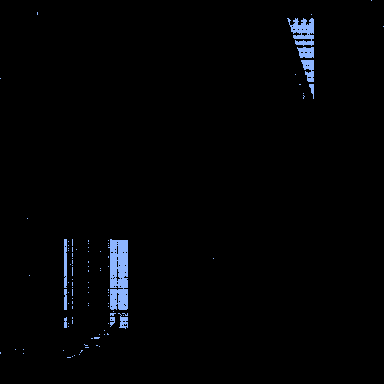Data artefacts
In addition to true events caused by photons (plus the expected, constant rate of false events due to thermal fluctuations in the detectors), all seven eROSITA CCDs detectors generate sporadic bursts of false events. The cause of these bursts is still under investigation, although it is probably connected to collisions of energetic particles (cosmic rays, solar protons) with the detector, either by directly ejecting charge from the detector surface, or by disturbing the processing electronics. These bursts nearly always take place within a single CCD readout frame and are primarily recognizable from the anomalously high event count in that frame. Although only of order 1% of frames seem to be affected by bursts, it is estimated that they generate about 10% of the total number of events in the raw event list. Most of such events will be filtered out in normal pipeline processing.
Three types of anomalies are recognized, from the different patterns they make across the CCD. These are described below.
1) Minimum ionizing particles (MIP) showers
The general appearance is of a scatter of straight streaks of random orientation, usually confined to a definite horizontal band on the detector (see figure below). Each streak is about 3 CCD pixels wide. The events comprise mostly very soft events (which tend to outline the streaks) and very hard ones (streak centres), with relatively few lying in the middle energy range.

Detector image showing a typical MIP shower. Soft events are coloured red, hard events blue.
2) Bar codes
These were so named because they often appear as broad, rectangular swathes of pixels, with striping oriented vertically. Occasionally the swathe tapers in on one side, ending in a point. Examples of both sorts are seen in the following figure. Bar-code events are usually very soft, below 200 eV.

Two examples of bar codes on a detector.
3) Space invaders
So-called space invaders are artefacts which are usually elongated horizontally. The narrow strip or stripe may occur divided horizontally into two roughly equal sections; short ones may taper at the bottom towards their centre. Their events appear to occur at all energies. The following figure shows an image in detector coordinates accumulated from seven readout frames showing space-invader events.

Space invader artefacts. Events are coloured depending on their energy, from violet at the soft end to white for the hardest.
The following image shows an accumulation of artefacts of all three types on a single detector over a single, typical integration time of four hours.
